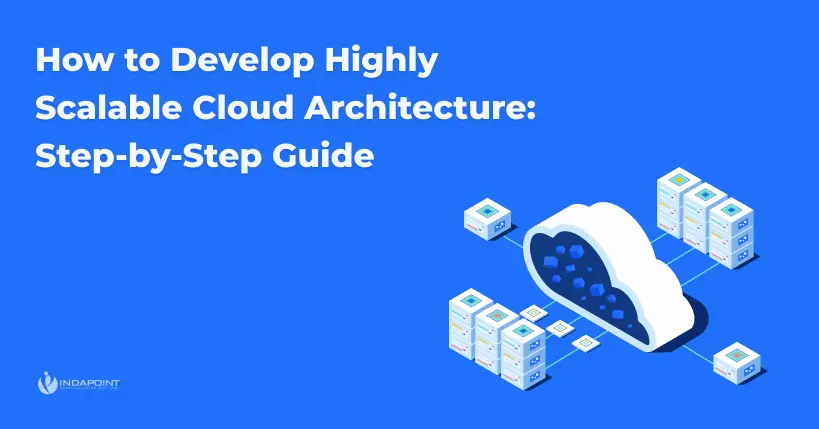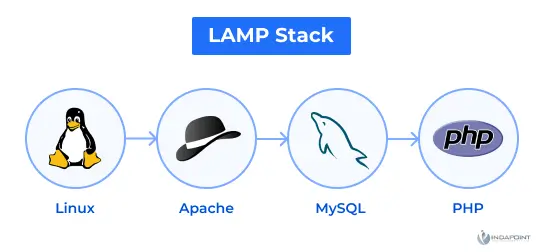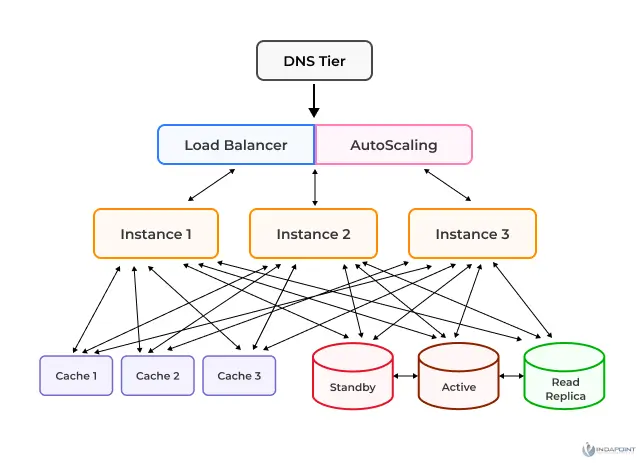How to Develop Highly Scalable Cloud Architecture : Step – by – Step Guide
October 13, 2022

Creating a flexible, scalable architecture for a service or application might be challenging. Once your application has failed at least once, it is difficult to pinpoint its weak points. However, more and more companies are creating applications requiring high load and higher uptime. Additionally, businesses want to be able to quickly expand their user bases, which increases the demand placed on applications and makes them work harder to keep up with them.
A reliable and scalable platform design is crucial for these applications. Every aspect of the application’s design must be considered, including finding ways to speed up particularly resource-intensive portions of the code or reduce the amount of memory required for caching. As a result, wise businesses frequently look to vendors who can offer and manage a scalable architecture that matches their demands because creating a scalable platform architecture is genuinely more of an art than a science.
Organisations can use a scalable platform to process enormous amounts of data quickly and efficiently to address complex business issues. You can guarantee that all your applications have a versatile plan and can be promptly overseen and redesigned by carrying out SOA engineering that all applications can acquire. An “out of the box” scalable architecture is offered by several top suppliers, including Indapoint, that does this.
Scalable Web Architecture: Overview
The foundation you need is scalable web architecture, whether you want to extend vertically or horizontally. Web applications can react to user demand and provide excellent performance because of the scalable architecture.
A monolithic architecture has strongly connected components throughout. The application can fail if only one of the several layers fails. However, scalable web design necessitates a loosely linked system of several modules communicating with one another via simple means.

An online architecture that uses the LAMP (Linux, Apache, MySQL, and PHP) stack is a typical illustration of scalable web architecture. Scalability, high availability, loosely linked services (fault-tolerant), and distributed computing are only a few of its significant advantages.
Scalability: Horizontal scalability is possible with scalable web architectures like LAMP. The distributed system can swiftly extend or contract resource pools following scaling requirements by adding or removing nodes.
High Availability: Any firm must have high uptime and minimum downtime. An hour of personal time can bring about critical income misfortune, especially for eCommerce organisations. To provide improved availability, a scalable web design must consider speedy disaster recovery even in partial system failure and redundancy of essential components.
Fault-tolerant: The framework should work regardless of whether a part fizzles, and there ought not to be a weak link.
Share Nothing: Each component in this design pattern is standalone and has a limited set of functionalities.
Developing scalable cloud architecture

Early on in the process of developing infrastructure, it’s critical to consider scalable architecture.
Scalable infrastructure is, first and foremost economic because you don’t have to pay for resources that aren’t being used. You may create trustworthy solutions resilient to workload increases by utilising highly scalable cloud services.
Cloud services are stacked with security features due to the emphasis cloud providers place on infrastructure security. Delaying the addition of scalability to your infrastructure is also a risky move. Why?
Consider a scenario in which your product launch is a big success, and your application’s user base is expanding quickly and unforeseen. As a result, you must remove the software and rebuild your environment as your infrastructure becomes overburdened. These complicated scenarios may result in the loss of clients and revenue for your company.What is a solid strategy for developing your scalable cloud architecture, then?
Containerisation
Containerise your app if it has a modular design. When you run your application utilising stages like Docker or Kubernetes, you can oversee cloud versatility from a solitary control board. We suggest you make your application stateless and maintain the smallest feasible app image size. Scaling is now simpler, quicker, and unnoticeable.
Monitoring
This is a crucial component of automation since it helps you determine what can and should be done automatically, limiting human error while boosting consistency and speed. You can also decide on scaling based on data by monitoring infrastructure parameters and setting alarms for abnormal conditions.
Modularity
We advise using a modular design as your application is where everything begins. In contrast to monolithic apps, microservices (a modular approach) divide complex components into simpler, smaller pieces that are simpler to scale, secure, and administer.
Reliability
Cloud services often come with cross-region replication and are highly available by default. Utilising those services reduces downtime and increases the dependability and resilience of your application. After all, if you lose availability, you’ll probably lose credibility and say goodbye to specific clients, which translates into lost revenue.
Automation
Autoscaling simplifies life, enabling you to scale resources without needing engineers in response to growing traffic. You only use as much server power as you require when you require it, thanks to auto-scaling, which is based on tracked metrics. There is also continuous integration and continuous delivery (CICD), which refers to the deployment of applications quickly and automatically.
Security
Security is essential since your business suffers if you can’t safeguard your services. Numerous security features are included with cloud services. For instance, data security-conscious cloud computing providers like AWS offer identity access management (IAM) and security groups.
Scale the architecture to fit the needs of the company
Making the finest initial preparations for your infrastructure is the key to scalable cloud computing. You’ll be prepared for growth in the future by creating and executing a scalable cloud solution from the beginning (or contraction).
Building adaptable cloud design doesn’t take much time or cash and has many advantages, including security and checking highlights. A few pre-fabricated AWS administrations merit consideration, like ASG and ECS.
One key benefit common to all cloud-native services, regardless of which best serves your company’s needs: is the flexibility to raise or decrease capacity in response to shifting loads.
Wrapping Up
You should choose your scaling strategy because you never know when you’ll become well-known. Additionally, customers will be disappointed with crashing (or even just slow) pages, which will harm your app’s reputation. Your revenue is ultimately impacted.
It takes time, a lot of experience, and money to learn how to create scalable websites. Indapoint is the finest choice for such a project for businesses struggling to complete this. For clients with millions of users, we’ve developed scalable web applications.






